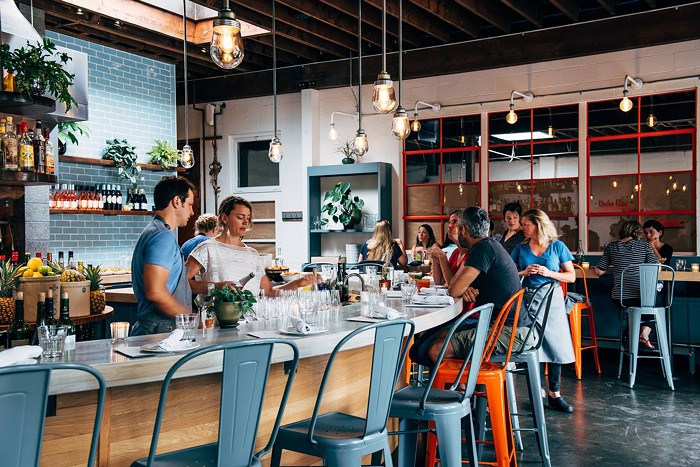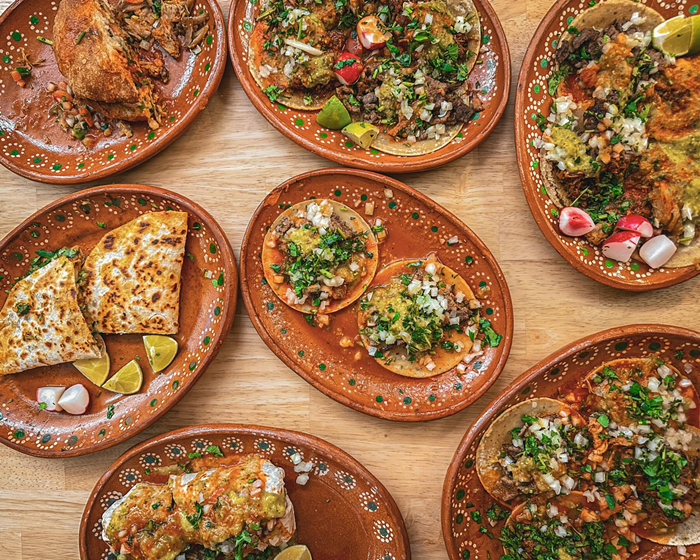Authenticity, as applied to restaurants, has recently been called "a bogus value only used by insecure, condescending jerks" in these pages. (See "Top Ramen," Brendan Kiley, Oct 30.)
First of all: Am NOT, douchebag.
Second, authenticity may not be a guarantee or a prerequisite of quality, but there is a reason we apply the word. It's the same reason that specialists speak of the terroir of wines (being able to taste the geographic influence of the soil in the finished wine) or the provenance of art (tracking the history not only of the piece's creation, but of its ownership). It's the reason real chefs don't wear gloves: They want the diner to taste just a hint of hand.
We watch for authenticity because there is something that happens when you walk into a Spanish restaurant and hear the Spanish owner and chef laughing with the Spanish waiters and calling out orders in Basque. Does it make the food taste better? Not always. But it does mean that the food you're about to eat is Spanish food, not just food in the Spanish style. And if you think you can taste the difference in exactly what a Spanish chef thinks a "pinch" of salt is, as compared to an American "pinch," you might be on to something.
Chef/owner Juan Hontanilla moved to Seattle from his native Bilbao (a coastal town in the Basque region of Spain) three years ago, after launching three restaurants in his hometown (one of which, Côte de Bôeuf, still survives). The Seattle venture, Bilbao Tapas Bar and Restaurant, opened in 2007 in the same building that houses the Metro Cinemas on 45th Street in the University District (formerly home to the miserable Stella's Italian restaurant). The three dining rooms (a sunken banquet room, a raised bar nook, and the main floor) are all cozy, humbly lit, and full of warmth and color, as you sit surrounded by murals and paintings of enormous red poppies.
The quick hit-and-run tapas-style menu seems perfectly suited to a movie-going crowd looking for a speedy bite before (or after) a film, but on each of two recent visits the dining rooms seemed full of diners languidly lounging for hours, ordering plate after plate, deciding on the next course only after the present one was finished.
The dishes are simple and traditional, the spicing unpretentious and straightforward. But in dish after dish, the simple ingredients were treated so beautifully that the whole of each dish was far greater than the sum of its ingredient parts.
The pulpo à la Gallega ($9.95) is a plate of the most perfectly cooked octopus I have ever tasted, with its slimy, gelatinous skin left intact and dripping off the flesh, served over paper-thin slices of potato and sprinkled with the aforementioned Spanish "pinch" of sea salt. The octopus was so tender, and still so moist, that it was difficult to believe this was the same rubbery substance that usually bounces off the plate.
The patatas bravas ($6.25) is a plate of crispy (boiled then fried) potatoes, drizzled with both a tomato-based brava sauce and a garlic aioli. If it sounds like a fancy description of french fries with ketchup and mayonnaise, it is, but imagine the plate of french fries with ketchup and mayonnaise that God might serve to her God. It was one of the most sublimely perfect dishes on the menu, the potatoes crisped but light and flaky inside, the sauces slowly meandering together on the plate, enticing you to sop up every drop, the rich heat of the brava and the cool cleanliness of the aioli somehow remaining distinct in every bite.
There were other highlights: The espinacas à la Catalana ($8.75), a bed of sautéed spinach with a toasted-pine-nut chutney, was the epitome of simplicity and vegetal warmth on a wet, cold night; the tortilla Española ($6.50)—the old standby potato, egg, and onion pie—was a little fluffier than I usually prefer, but it still did the job; and the chuletitas de cordero ($10), a pair of diminutive lamb chops served over a bed of perfectly caramelized onions and mushrooms, was lovely.
The menu has an entrée side as well—with made-to-order paella, grilled steak, and pasta—but we stuck to the tapas side. In fact, I don't think I saw an entrée served in the dining room on either of my visits.
During one recent visit, Bilbao had a pair of guitarists playing classical Spanish standards in the dining room. This is the sort of thing I usually find intrusive and distracting, but somehow they managed to spice up the room without calling any attention to themselves. It was an evening of music; of chatter (Spanish was being spoken at a fair percentage of the room's tables); of flamenco-style syncopated clapping coming from Sr. Hontanilla, standing at the back of the room; and of simple, honest, straightforward, delicious food parading across the table. ![]()



















